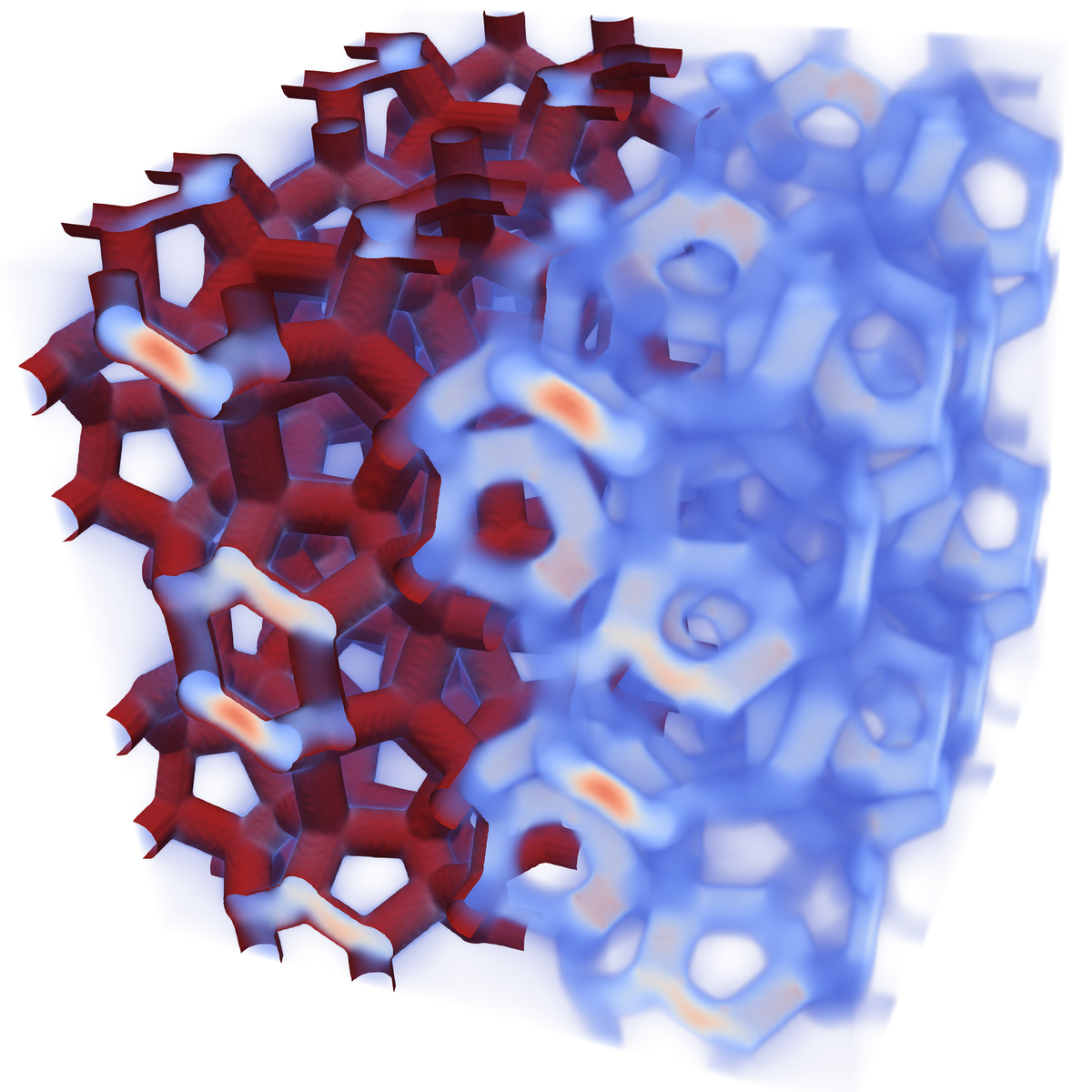Torquato lab uses foam to manipulate light
There is more to foam than meets the eye. Literally. A study by Princeton scientists has shown that a type of foam long studied by scientists is able to block particular wavelengths of light, a coveted property for next-generation information technology that uses light instead of electricity.

Image credit: Torquato lab
The researchers, integrating expertise from materials science, chemistry and physics, conducted exhaustive computational simulations of a structure known as a Weaire-Phelan foam. They found that this foam would allow some frequencies of light to pass through while completely reflecting others. This selective blocking, known as a photonic band gap, is similar to the behavior of a semiconductor, the bedrock material behind all modern electronics because of its ability to control the flow of electrons at extremely small scales.
“This has the property we want: an omnidirectional mirror for a certain range of frequencies,” said Salvatore Torquato, professor of chemistry and the Princeton Institute for the Science and Technology of Materials. Torquato, the Lewis Bernard Professor of Natural Sciences, published the results Nov. 6 in the Proceedings of the National Academy of Science, with coauthors Michael Klatt, a postdoctoral researcher, and physicist Paul Steinhardt, who is Princeton’s Albert Einstein Professor in Science.
While numerous examples of photonic band gaps have been shown previously in various types of crystals, the researchers believe that their new finding is the first example in a foam, similar to the froth of soap bubbles or a draft beer. Unlike the disordered foam of beer however, the Weaire-Phelan foam is a precisely structured arrangement with deep roots in mathematics and physics.
The story continues… Read the full story here:
https://engineering.princeton.edu/news/2019/11/15/foam-offers-way-manipulate-light
